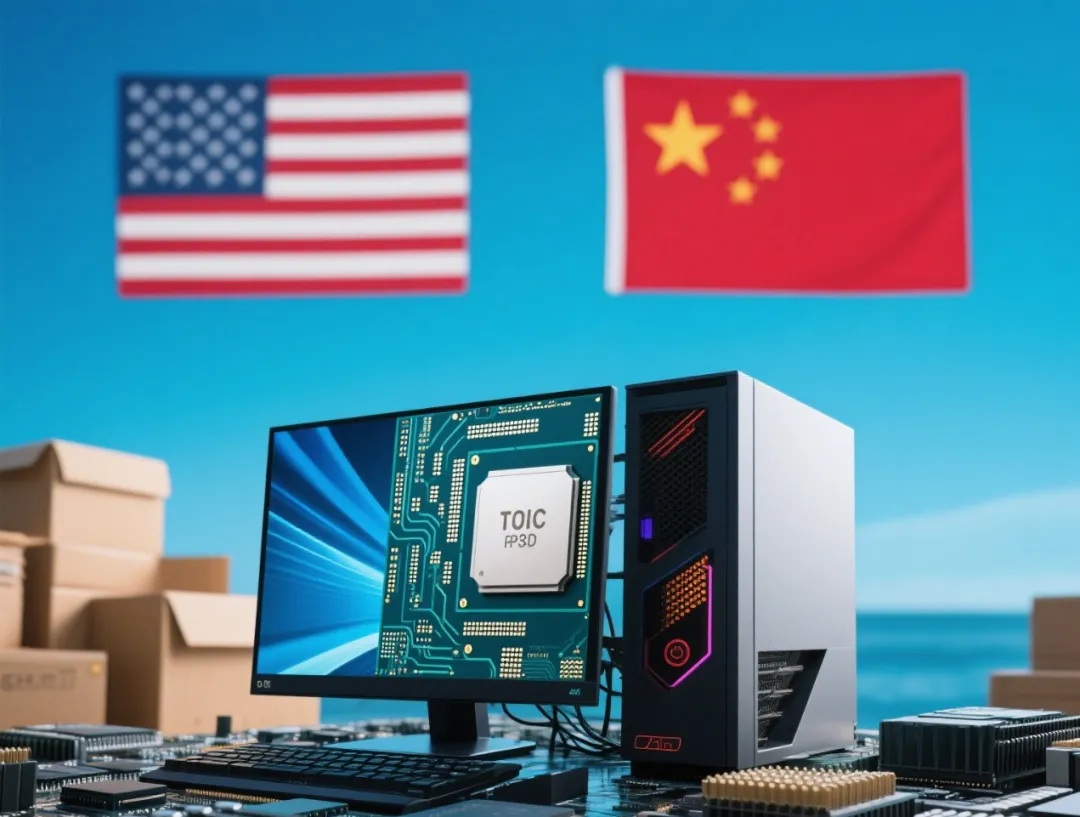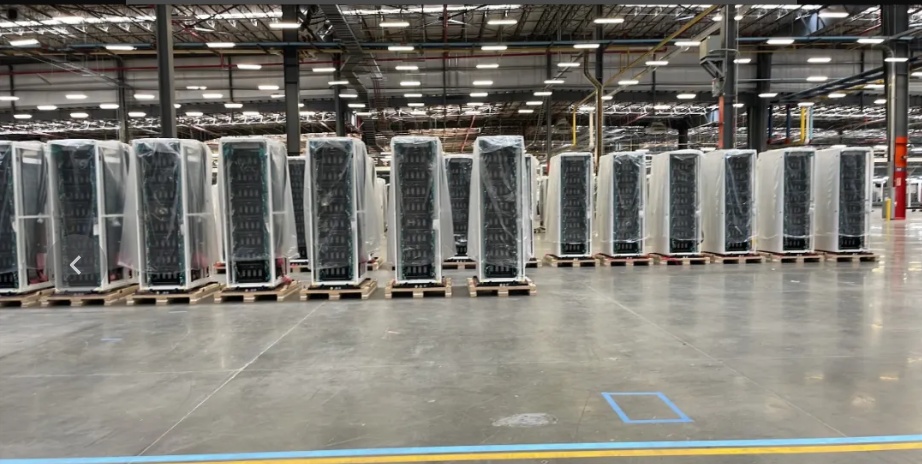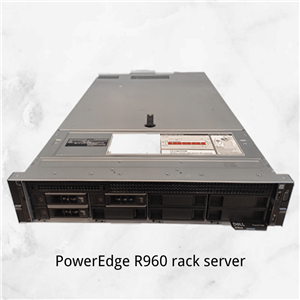Analysis of the surge in orders: The impact of US tariffs on the electronics industry and survival advice for practitioners
PC stocking guide under tariff war: Should designers buy a good computer quickly?
The 'double-edged sword' effect of tariff policy

1.1 Core Logic of US Global Taxation and China's Equivalent Tariffs
On the chessboard of global trade, the tariff game between the United States and China has always been a highly anticipated focus. During the Trump administration, under the pretext of a "trade deficit," tariffs were imposed on Chinese imports, with an additional 34% tariff. This is not all, and combined with the previous 20% punitive tariff, the actual tax rate is as high as 54%. This measure is undoubtedly a giant stone thrown into the calm lake of Sino US trade, stirring up a thousand waves.
China naturally did not sit idly by and quickly took countermeasures, imposing a 32% tariff on electronic products originating from the United States. The back and forth between the two sides may seem like a simple competition of tariff figures, but in reality, there are deeper strategic considerations behind it. The core battlefield of this game focuses on high-tech fields such as semiconductors and communication equipment, which are precisely the key links in the PC industry chain. The United States is attempting to curb the development of China's high-tech industry and maintain its dominant position in the global technology field through tariff measures; China's countermeasures are aimed at defending its own industrial interests and breaking through the technology blockade and trade bullying imposed by the United States.
1.2 Tariff Transmission Mechanism: Cost Transfer from Enterprises to Consumers

The adjustment of tariffs is like toppling dominoes, triggering a series of chain reactions. PC industry giants such as Dell and HP have accelerated the relocation of 50% of their production capacity out of China and shifted their production lines to Vietnam, Mexico,and other places to cope with cost pressures caused by tariffs. This decision may seem like a last resort for the company to reduce costs, but it has brought many problems. The new production base has insufficient worker proficiency and incomplete supply chain support, resulting in a significant decrease in short-term production efficiency and an increase in assembly costs.
The profit margins of hardware companies have also been significantly compressed, with Morgan Stanley's analysis showing a 15% -20% reduction in profit margins. In order to maintain survival, enterprises have to shift this cost onto end products. However, price transmission is not achieved overnight, and there is a certain lag. The price increase cycle of end products is about 6-12 months. During this cycle, businesses are struggling to support themselves, while consumers are waiting and observing.
Industry giants such as Intel and NVIDIA, relying on their monopolistic position in the industry, may even raise global prices simultaneously under the pretext of "rising costs". AMD is likely to follow suit and increase prices in such a market environment. Once, NVIDIA released the RTX 40 series graphics cards, which were priced high due to various factors, causing many players to hesitate. Nowadays, under the influence of tariffs, graphics card prices are full of uncertainty. For consumers, it has become increasingly difficult to purchase a cost-effective computer or CPU.
2、 Short term and long-term games in the hardware market
2.1 The 'double-edged sword' of enterprise hoarding strategy
In the ever-changing trade policies, the hoarding strategy of enterprises has become an important factor affecting the hardware market. Looking back at the early stages of the pandemic in 2025, Acer, with its foresight to stock up on Chinese made laptops in advance, successfully delivered 20000 orders to Boston in just four days, becoming an industry legend for a time. However, the good times did not last long, and then Acer encountered a shortage of monitors, which also showed us the duality of stockpiling strategies.
Nowadays, technology giants such as Microsoft and Dell have once again sparked a wave of hoarding, requiring suppliers to stockpile Chinese made components by the end of 2025. In the short term, this strategy can indeed alleviate supply pressure to a certain extent, ensuring that enterprises can maintain normal production and sales for a period of time after the implementation of tariff policies. But in the long run, there are hidden dangers. A large amount of stockpiling has led to a significant increase in channel inventory costs. Once market demand fluctuates, these inventories may become a heavy burden for the enterprise. Just like in the later stage of the epidemic, the demand for PC market plummeted, and a large amount of inventory backlog made enterprises suffer greatly. They had to clear their inventory through price reduction promotions and other means, which not only compressed the profit margin of enterprises, but also had an impact on the market price system.
2.2 "Origin Password" for Key Hardware
Under the shadow of tariffs, understanding the origin of key hardware and the impact of tariffs is crucial for both consumers and businesses.
In terms of CPU, Intel's products, due to some being packaged in the United States, are affected by a 34% tariff on 14th generation and earlier products, and price increases are inevitable. The AMD 7000 series, manufactured by TSMC, is relatively less affected by tariffs and has become an important alternative solution for consumers when choosing CPUs.
In the graphics card market, most of NVIDIA and AMD's products are produced by TSMC, and their nominal origin is not in the United States. However, in the context of the global supply chain, the increase in costs may ultimately be passed on to consumers, leading to a rise in graphics card prices. However, with the rise of domestic graphics cards, such as the Moore Thread, it continues to make breakthroughs in performance and technology, providing consumers with new choices. Although there is still a certain gap in performance between domestic graphics cards and international giants, with the continuous advancement of technology, the future is promising.
In the field of solid-state drives, products from brands such as Samsung and Kaixia are mainly produced in South Korea and Japan and are not directly affected by tariffs. However, due to the linked increase in memory granule prices, the price of solid-state drives is also difficult to maintain stability. It is gratifying that the domestically produced Changjiang Storage series solid-state drives have emerged in the market, and have gained widespread market recognition for their excellent performance and stable quality. For example, the Zhitai TiPlus 7100 became one of the most popular SSD products during JD's "Double 11" period, with sales and transaction volumes even surpassing established manufacturers such as Samsung, which also marks the increasing competitiveness of domestic solid-state drives in the market.
3、 The 'Three Dimensional Evaluation Model' for Stocking Decision making
3.1 Essential Users: Seize the Promotion Window Period
For first-time users, waiting may be a torture, but seizing the promotional window is a wise move. During e-commerce promotions such as 618 and Double 11, major platforms will introduce generous subsidy policies, which can to some extent offset the price pressure brought by tariffs. Just like during last year's Double 11 shopping festival, many e-commerce platforms issued discount coupons for computer hardware products, combined with promotional activities by merchants, allowing consumers to purchase their desired computers or CPUs at a more affordable price.
When choosing products, first-time users also need to master some pitfalls avoidance guidelines. Prioritizing products with packaging locations outside the United States is an effective way to reduce the impact of tariffs. Taking AMD 7950X3D as an example, it adopts Vietnamese packaging and has relatively stable prices under tariff policies, becoming the first choice for many consumers. For those scattered CPUs with unclear origin, consumers need to remain vigilant. These scattered CPUs, of unknown origin, may pose quality risks and have significant price fluctuations due to the impact of tariffs. Therefore, caution should be exercised when purchasing them.
3.2 DIY Players: Establishing a Risk Hedge Portfolio
DIY players have a unique pursuit for computer hardware, and under the dual impact of tariffs and market fluctuations, establishing a risk hedging portfolio is the key to safeguarding their own interests.
Batch procurement of core components is an effective strategy. CPU、 The prices of core components such as motherboards and memory are influenced by various factors such as exchange rate fluctuations and market supply and demand. By purchasing in batches, the risk of exchange rate fluctuations can be diversified. For example, purchasing CPUs when the exchange rate is low, and then timely purchasing motherboards and memory based on market price fluctuations, can to some extent reduce procurement costs.
Storing consumables for 2-3 years is also an important means for DIY players to cope with long-term inflation. Although the unit price of consumables such as silicone grease and cooling fans is not high, long-term use is still a significant expense. Against the backdrop of rising hardware prices due to tariffs, consumable prices may also increase accordingly. Reserve a certain amount of consumables in advance to avoid increased costs due to price increases.
We also need to learn from some warning cases. In the 2024 graphics card mining boom, many players saw the skyrocketing prices of graphics cards and hoarded them in advance, hoping to make a big profit. However, with the government's policy crackdown on virtual currency mining, graphics card prices have plummeted, and these players who hoarded in advance have lost everything. This also reminds DIY players to fully consider market risks when stockpiling and avoid blindly following trends.
3.3 Enterprise Users: Building an Elastic Supply Chain
Building a resilient supply chain is crucial for ensuring the normal operation of enterprises when facing tariffs and market fluctuations.
Regional layout is an effective means of dispersing geopolitical risks. By establishing backup procurement channels in Southeast Asia, Mexico, and other regions, companies can reduce their dependence on a single area. When the trade policy between China and the United States changes, companies can quickly procure components from other regions to ensure production continuity. Some large enterprises have begun to establish production bases and procurement centers in Vietnam, Mexico, and other places to cope with possible trade risks.
Localization substitution is also an important direction that enterprise users need to consider. With the continuous development of China's technology industry, domestic hardware products are constantly improving in terms of performance and quality. Huawei Ascend AI servers have performed well in the field of AI computing and have been applied in many enterprises; Changjiang Storage's enterprise grade SSDs have also gained market recognition for their high performance and stable quality. Enterprises can actively test these domestic solutions, gradually achieve domestic substitution, and reduce the risks brought by tariffs and international market fluctuations.
According to IDC's forecast, the proportion of domestically produced chips in the Chinese server market is expected to exceed 40% by 2026. This data also indicates that domestic substitution has become an unstoppable trend. Enterprise users should follow this trend, actively layout domestically produced hardware products, and build a more stable and reliable supply chain.
4、 Four Warning Signals for Future Trends
4.1 Policy Trends: WTO Ruling Pending, 2026 Tax Rates May Face Significant Changes
In this game of tariffs between China and the United States, policy trends have always been a key indicator. At present, the arbitration result of the WTO on the tariffs between China and the United States is still pending, and this ruling will undoubtedly become a key factor affecting the future direction of tariff policies. If China wins the arbitration, the United States may be forced by international pressure to adjust some tariff policies; On the contrary, if the ruling is unfavorable to China, the tariff game between the two sides may further escalate.
According to the previous policy released by the US government, 2026 will be an important time point, and the tariff rates for some products may undergo significant adjustments. The tariff changes in key areas such as semiconductors will directly affect the cost and price of PC hardware. Both businesses and consumers need to closely monitor policy trends and prepare in advance to respond. For enterprises, policy changes may mean a reconfiguration of the supply chain; For consumers, it may affect the best timing to purchase a computer or CPU.
4.2 Technological Breakthrough: Mass Production of Domestic 14nm Chips, Rewriting Price Trends
The power of technological breakthroughs is quietly rewriting the landscape of the hardware market. With the mass production of domestically produced 14nm chips, China has made significant breakthroughs in the semiconductor field. This breakthrough not only breaks the technological monopoly of foreign countries, but also brings new variables to the hardware market. According to market research institutions, the mass production of domestically produced 14nm chips has led to a sharp decrease of 40% in TSMC's monthly order volume for 14nm chips, dropping to around 60000 pieces. There is a serious inventory backlog, with some products experiencing a decline of over 20%.
The rise of domestic chips has had a profound impact on the price trends of CPUs and GPUs. With the continuous maturity of domestic chip technology and the continuous improvement of production capacity, its competitiveness in the market will also continue to enhance. This will force international chip giants to lower prices in order to maintain market share. In the future, we are expected to see further declines in CPU and GPU prices, which will also benefit consumers.
4.3 Exchange rate fluctuations: RMB depreciation, hardware import costs rise rapidly
Exchange rate fluctuations are like an invisible hand, having a significant impact on hardware import costs. Every fluctuation in the exchange rate of the Chinese yuan against the US dollar may lead to changes in hardware import costs. According to relevant data statistics, for every 5% depreciation of the Chinese yuan against the US dollar, the cost of hardware imports will increase by about 8%.
In the past period of time, the exchange rate of the Chinese yuan against the US dollar has shown a two-way fluctuation characteristic. Affected by various factors at home and abroad, including differences in monetary policy, global economic growth expectations, geopolitical risks, etc., the fluctuation of the RMB exchange rate has intensified. For enterprises and consumers who rely on imported hardware, the cost increase caused by exchange rate fluctuations is undoubtedly a significant challenge. Enterprises need to strengthen risk management and use financial derivatives to hedge exchange rate risks; Consumers need to fully consider the exchange rate factor when purchasing hardware and choose the appropriate purchase timing.
4.4 Industry mergers and acquisitions: semiconductor integration accelerates, giant monopolies may become the norm
The wave of industry mergers and acquisitions is sweeping across the semiconductor industry, accelerating the integration and transformation of the industry. By 2025, there have been three billion dollar acquisitions in the semiconductor industry, such as TCL Technology's acquisition of a 21.53% stake in Shenzhen Huaxing Semiconductor for 11.562 billion yuan, further consolidating its LCD panel production capacity advantage.
The direct impact of industry mergers and acquisitions is the increase in market concentration and the intensification of giant monopolies. With the formation of monopoly by giants, market competition may weaken and product prices may be manipulated by giants. For consumers, this may mean a reduction in choices and an increase in prices. However, from another perspective, industry mergers and acquisitions may also bring about technological integration and innovation, driving the development of the industry.
For ordinary consumers, it is recommended to complete essential purchases before Q3 2025, with a focus on AMD Zen5 architecture CPUs and domestic storage solutions. AMD Zen5 architecture CPU has become a popular choice for consumers due to its excellent performance and reasonable price; Domestic storage solutions, such as products from Changjiang Storage, continue to improve in performance and quality, providing consumers with more choices.

Enterprise users should establish a dual track supply chain of "domestic+overseas" and reserve 15% -20% of the budget to cope with sudden price increases. By establishing a dual track supply chain, enterprises can reduce their dependence on a single supplier and improve the stability of the supply chain. Reserving a certain budget can also provide enterprises with sufficient funds to cope with sudden price increases and ensure normal production.
The essence of tariff game is a technological competition, in which rational consumption is the best strategy to deal with uncertainty. Both businesses and consumers should maintain rationality, not blindly follow trends, and make reasonable decisions based on their own needs and actual situations. Only in this way can we find our own foothold in this ever-changing market competition.
————————This article is excerpted from the WeChat official account, cultural seal, regular script




